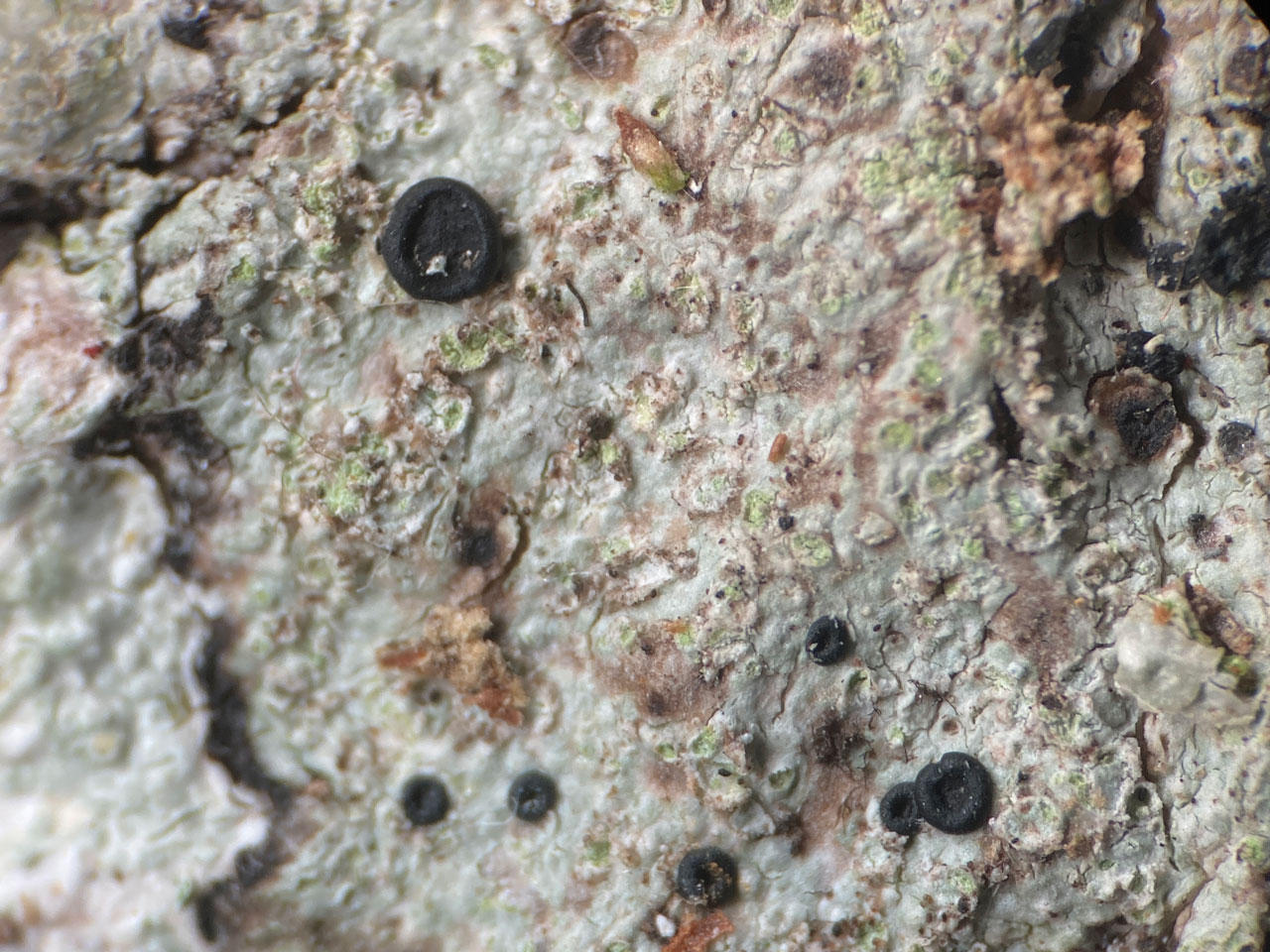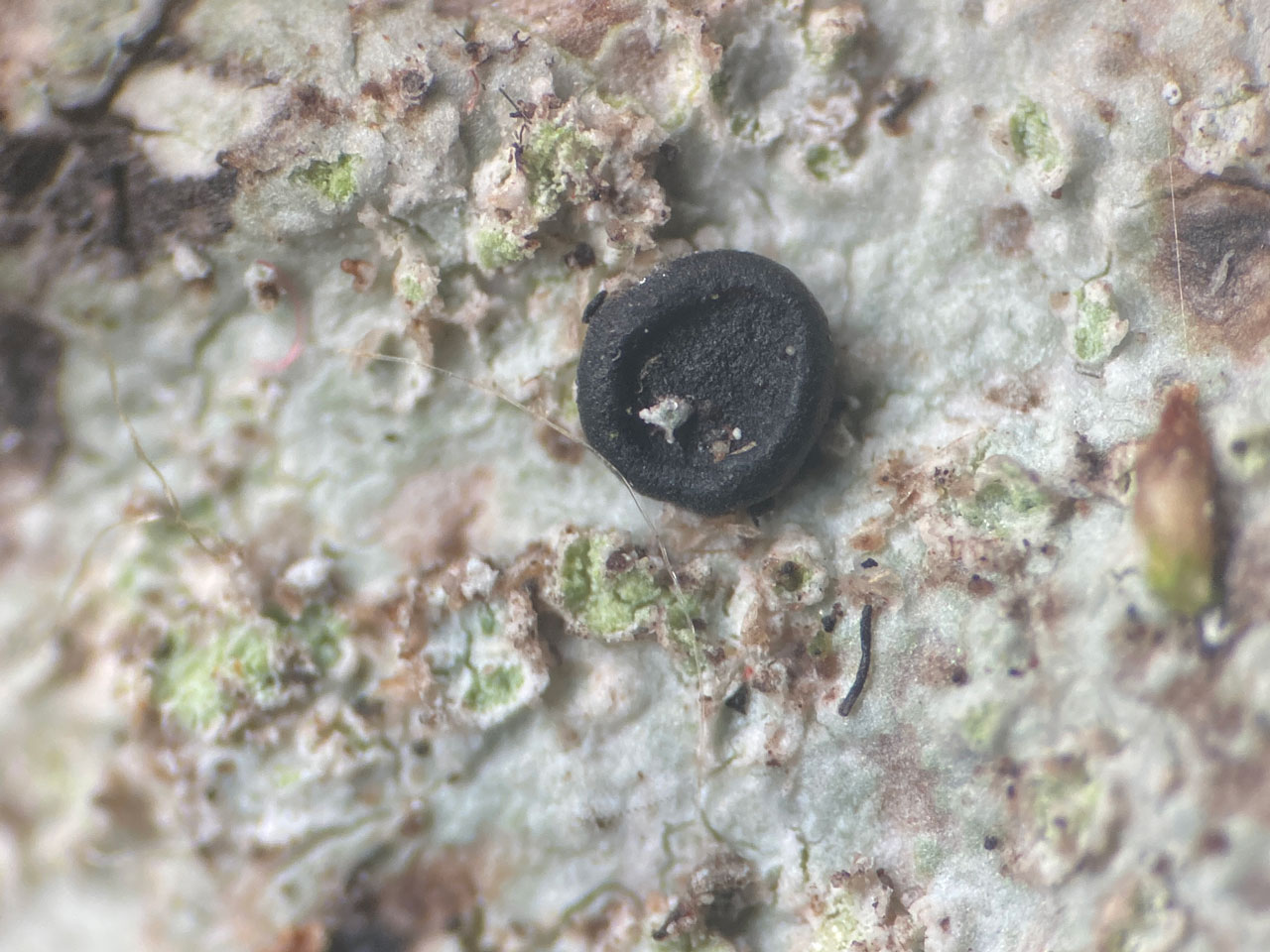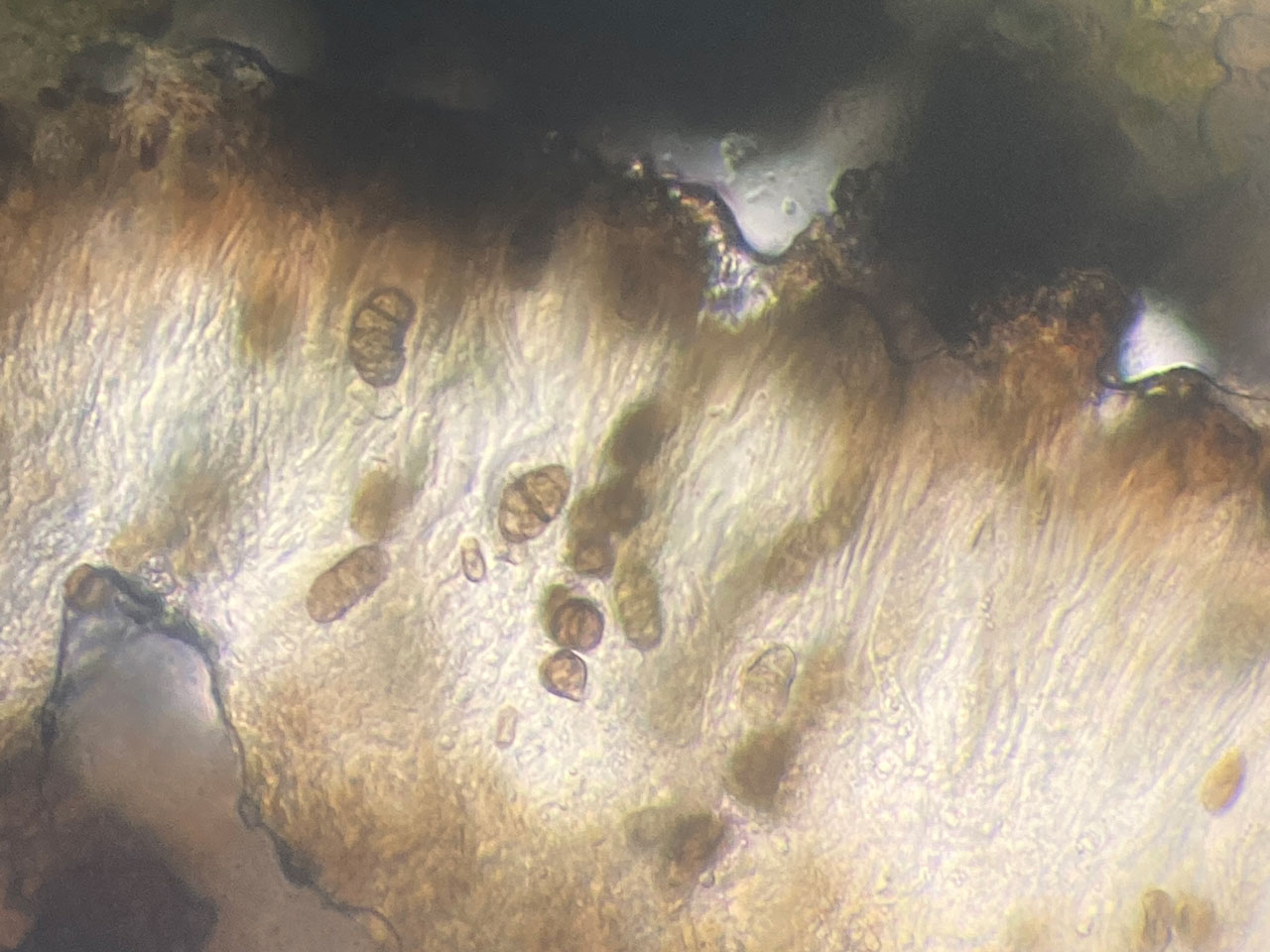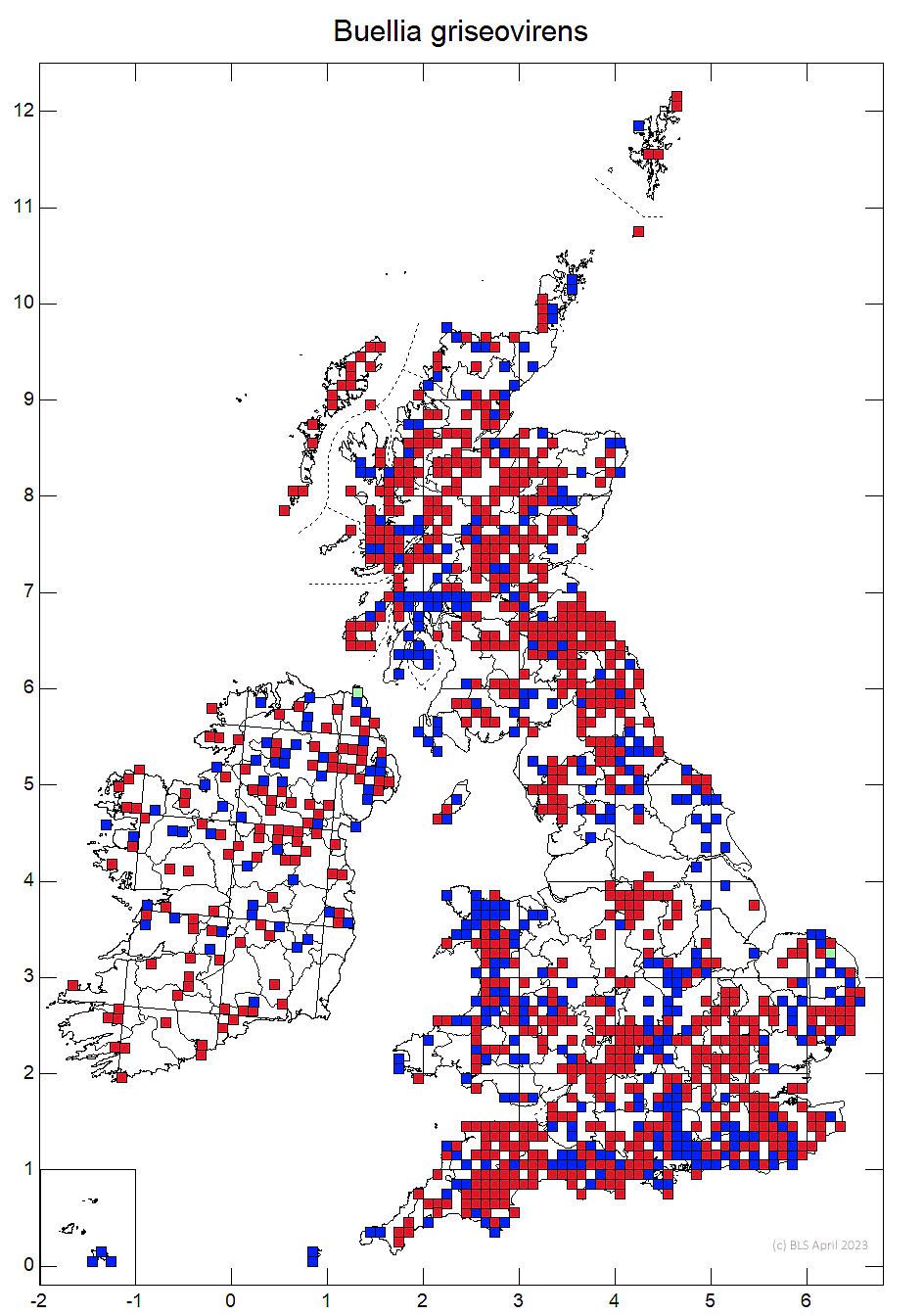Buellia griseovirens
A common, usually sterile, sorediate lichen, with a grey-white to greenish grey thallus and mostly discrete soralia which are pale green-grey to ash-grey, often with a blue tinge, but pale yellow when abraded. Found on mildly acidic to neutral bark and tolerant of moderate pollution, also found on lignum and weathered worked timber and rarely on brick, usually in well-lit situations.
Thallus ± immersed and thin to thick, smooth to wrinkled or ± rimose-cracked, grey-white, pale grey-brown to greenish grey; a grey- black prothallus sometimes evident (especially on smooth bark); soralia mostly discrete, 0.15–0.4 mm diam., often crowded, a few becoming confluent, pale green-grey to ash-grey, often with a blue tinge but pale yellow when abraded; soredia 15–26 µm diam., pigmented hyphae brown, K–, N–; medulla I–. Apothecia have been very rare, but their occurence may be increasing, 0.4–1 mm diam., superficial; disc flat to convex, black, not pruinose; exciple K+ yellow; epithecium brown; hymenium 110–120 µm tall, without oil droplets; hypothecium brown. Ascospores (13–) 15–28 × 7–13 µm, submuriform, grey to brown. Thallus and soralia C± yellow, K+ yellow→red (crystals), KC–, Pd+ yellow or yellow- orange, UV– (atranorin, norstictic acid and traces of other substances of the stictic acid complex).
A common and variable species. The K reaction is often weak and production of red crystals should be checked in microscope preparations. The C+ yellow reaction is unexplained but often characteristic. Often confused with Mycoblastus caesius (UV+ bright white), Violella fucata (K– & Pd+ orange-red) and Xylographa vitiligo (K+ yellow, Pd+orange). Buellia arborea (K+ yellow & Pd± yellow) is similar when sterile.
Fertile thalli have become much more frequent in the New Forest, Hampshire and recent years, and should be looked out for elsewhere.
On ± smooth bark of deciduous trees and shrubs, less often on conifers, wood, and rarely on brick, usually in well-lit situations, tolerant of moderately polluted areas and often a pioneer species.

Frequent, throughout Britian and Ireland.
Cannon, P., Prieto, M., Coppins, B., Sanderson, N., Scheidegger, C. & Simkin, J. (2021). Caliciales:
Caliciaceae, including the genera Acolium, Amandinea, Buellia, Calicium, Diploicia, Diplotomma, Endohyalina, Monerolechia, Orcularia, Pseudothelomma, Rinodina and Tetramelas. Revisions of British and Irish Lichens 15: 1-35.
Text by Neil A. Sanderson based on Cannon et al (2021).






